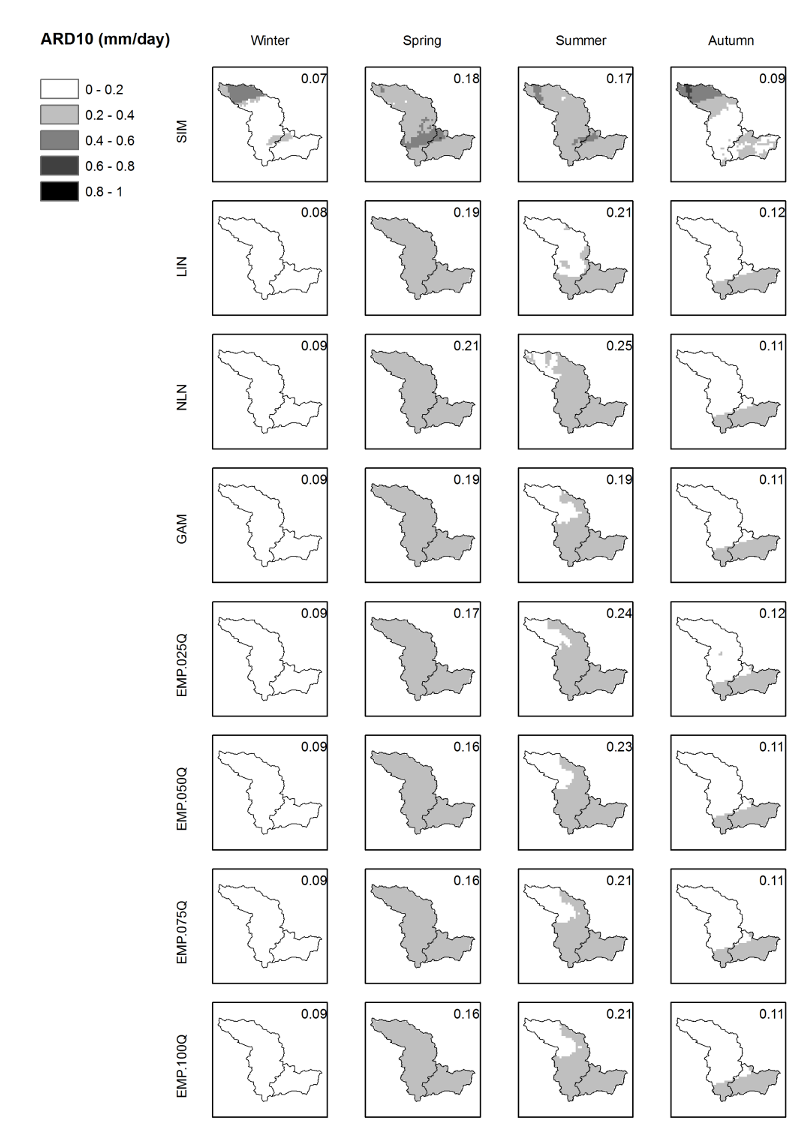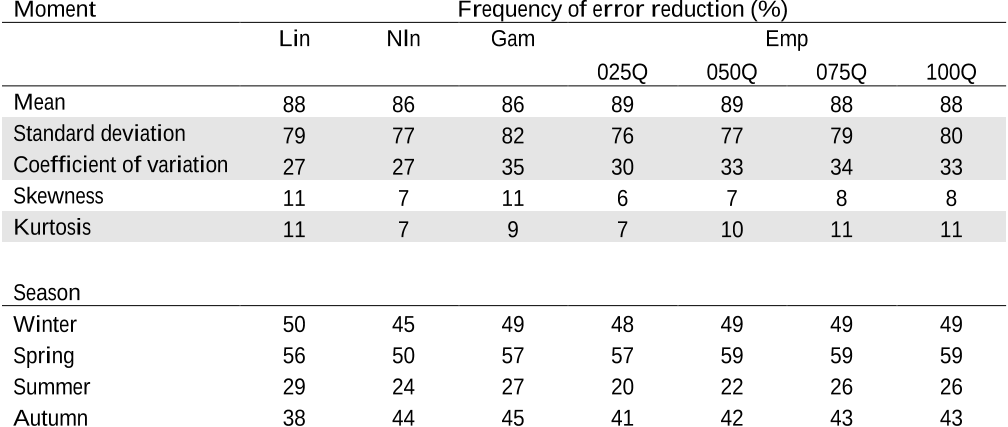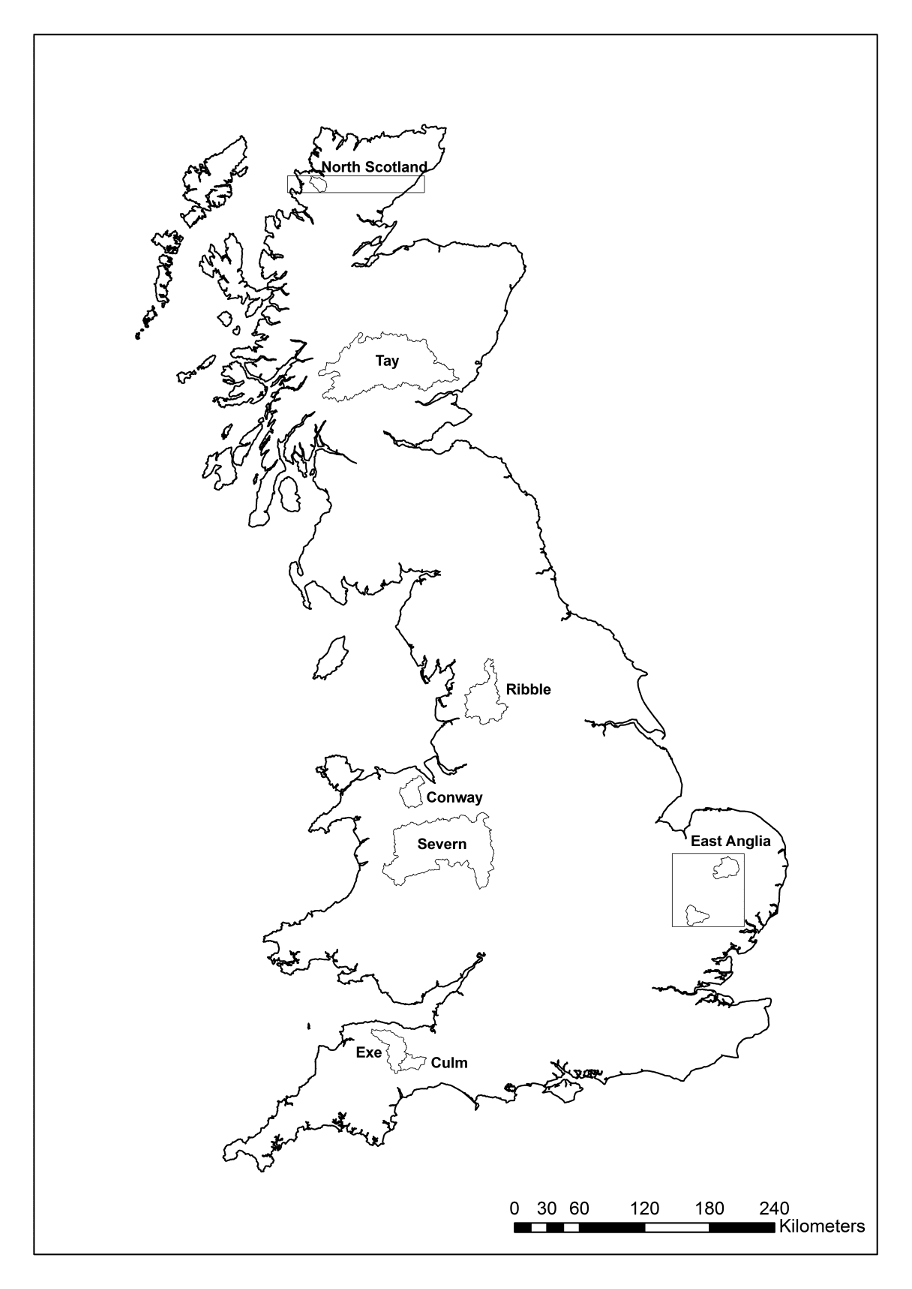




Did you find this useful? Give us your feedback

















1,859 citations
809 citations
337 citations
...Several bias correction methods ranging from simple scaling to sophisticated distribution mapping have been developed in the last decade [Sharma et al., 2007; Piani et al., 2010; Mpelasoka and Chiew, 2009; Ryu et al., 2009; Chen et al., 2011b, 2013; Salvi et al., 2011; Iizumi et al., 2011; Lafon et al., 2012; Teutschbein and Seibert, 2012]....
[...]
...…simple scaling to sophisticated distribution mapping have been developed in the last decade [Sharma et al., 2007; Piani et al., 2010; Mpelasoka and Chiew, 2009; Ryu et al., 2009; Chen et al., 2011b, 2013; Salvi et al., 2011; Iizumi et al., 2011; Lafon et al., 2012; Teutschbein and Seibert, 2012]....
[...]
249 citations
203 citations
...…Changes in India 37 38 J. Sanjay et al. percentile threshold of daily maximum air temperature from each CORDEX model outputs after applying a quantile mapping bias-correction following Lafon et al. (2013), which was based on an empirical distribution correction method (Wood et al. 2004)....
[...]
12,662 citations
3,108 citations
2,015 citations
...The bias in GCM and RCM daily precipitation simulations may not be limited to monthly means, and may also affect precipitation variability and other derived measures that are of hydrological importance (Arnell et al., 2003; Diaz-Nieto and Wilby, 2005; Fowler et al., 2007)....
[...]
...…that have been reviewed in the literature include statistical downscaling, which uses empirical relations between climate model outputs and historical observed data, and dynamical downscaling, which involves the use of a regional climate model (RCM; see Fowler et al., 2007, for a detailed review)....
[...]
1,706 citations
...…and spatially varying change factor and exponent; Leander and Buishand, 2007), (3) distributionbased quantile mapping (e.g. γ -distribution, Hay et al., 2002; Piani et al., 2010) and (4) distribution-free quantile mapping (e.g. empirical distribution, Wood et al., 2002, 2004; Ashfaq et al., 2010)....
[...]
...A method of the same family has been shown to perform well in the correction of RCM precipitation forecasts for use as variables of interest for hydrologic simulations and climate change studies (Wood et al., 2002, 2004; Themeßl et al., 2010)....
[...]
Quantifying the effects of future changes in the frequency of daily precipitation extremes is a key challenge in assessing the vulnerability of hydrological systems to climate change.
Downscaling techniques that have been reviewed in the literature include statistical downscaling, which uses empirical relations between climate model outputs and historical observed data, and dynamical downscaling, which involves the use of a Regional Climate Model (RCM) (see Fowler et al., 2007 for a detailed review).
When correcting for biases in climate model output, it is also important that changes in the frequency distribution of climatic variables are correctly represented.
The most comprehensive correction was achieved by using the empirical quantile-mapping methods, which incorporate information from the frequency distributions of modelled and observed precipitation.
RCMs offer a more physically-realistic approach to GCM downscaling than statistical downscaling because they provide an explicit representation of the mesoscale atmospheric processes that produce heavy precipitation.
This property of RCM simulations is important in producing realistic forcing data for hydrological models because many floods and droughts are caused by spatially- and temporally-persistent precipitation patterns.
This suggests that, while the greatest accuracy is achieved by an empirical distribution method defined by at least 25 quantiles (i.e., the overall error from the same calibration-evaluation period is smallest), results are also most sensitive to the chosen calibration period.
At the same time, the potential to over-calibrate the bias-correction procedure to aparticular set of reference data increases as more and more observed data are used to calculate the correction parameters.
Techniques to correct the biases in the climate model outputs are therefore used to improve the realism of GCM/RCM precipitation time series, based on statistical properties obtained from observed data taken from the same baseline period.
For the skewness and kurtosis, the highest frequency of error reduction is achieved by the linear method (61% and 62%, respectively), while the lowest frequency is obtained using the empirical distribution method with 50 quantiles (24% and 18%, respectively).
the effectiveness of bias-correction was found to be sensitive to the time-period for which the bias-correction procedures have been calibrated.
For the higher moments, the frequency of error reduction further decreases to 11% (gamma distribution and linear methods) and 6% (empirical distribution method with 25 quantiles) for skewness, and to 11% (linear method and empirical distribution method with 75 and 100 quantiles) methods to 7% (non-linear method) for kurtosis.
the correction method based on a gamma distribution offers the best combination of accuracy and robustness, but it is valid only when the observed and modelled precipitation data are gamma distributed.
Another approach is to generate synthetic precipitation time series using a stochastic weather generator, where the parameters in the generator are changed according to estimated changes in the climate from the GCM/RCM outputs (e.g. Kilsby et al., 2007, Fatichi et al., 2011).
To evaluate the robustness of the correction procedure, the authors calculated the average of the absolute value of the relative differences (ARD, defined as | | ⁄ , where X and X’ are statistics from observed and bias-corrected precipitation, respectively) between the N-m+1 sets of corrected and observed precipitation data over the m-year period that was not used to calibrate the bias-correction method.
The robustness of the methods for the six remaining catchments is assessed by considering how the performance of each correction method varies with location and climatic characteristics using the methodology described above.